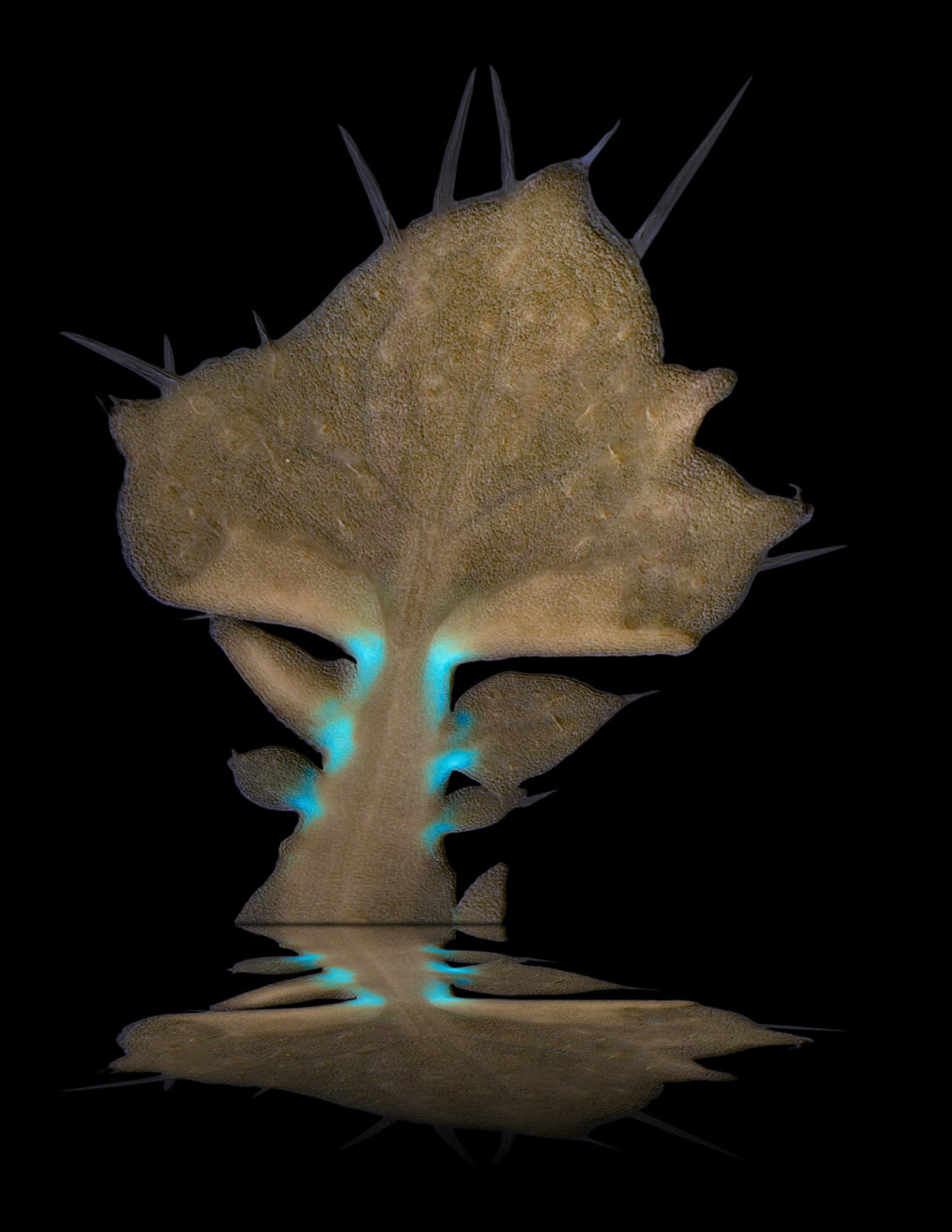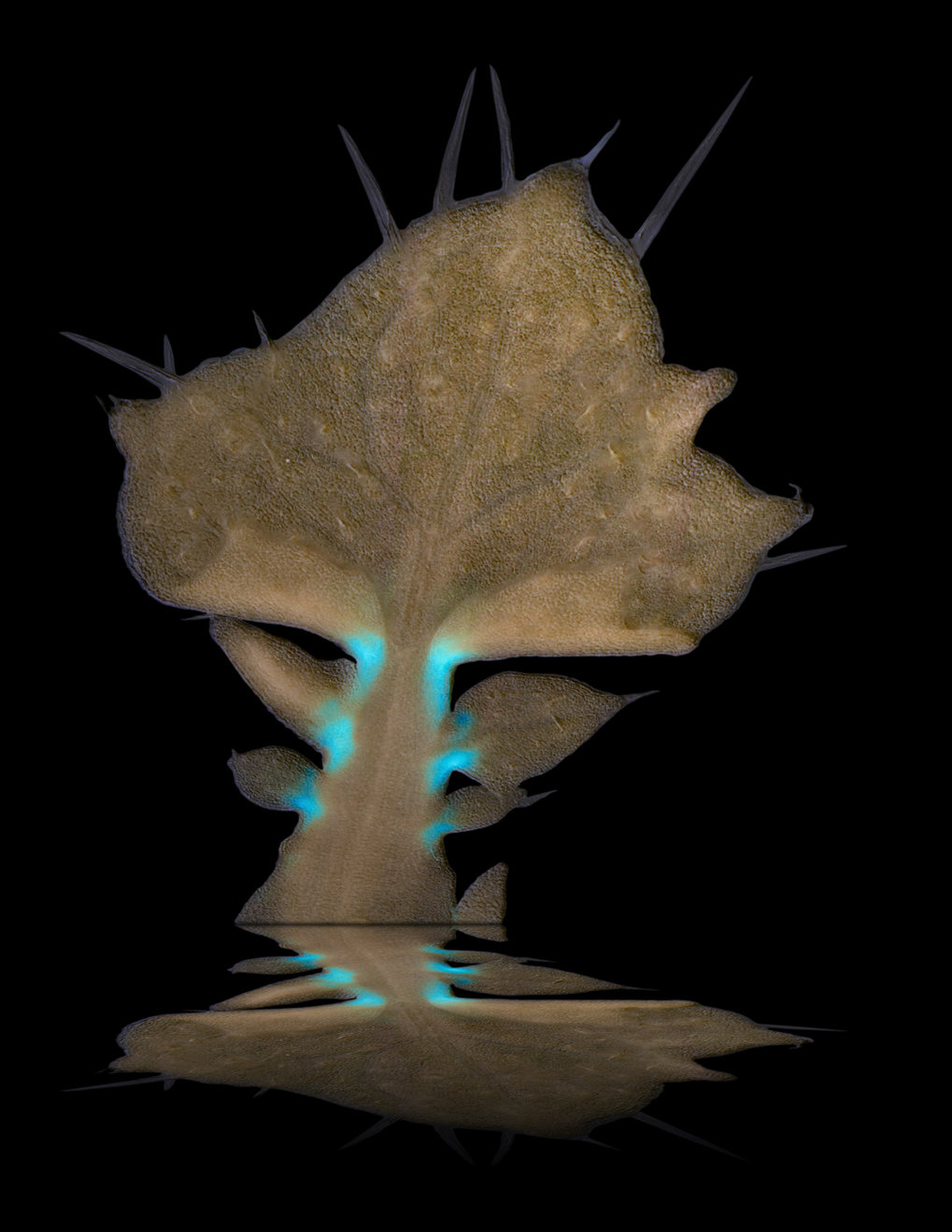Enhancing leaf shape diversity
A small piece of DNA with a large effect on leaf shape
Millions of years ago, some plants in the mustard family made the switch from simple leaves to complex leaves through two tiny tweaks to a single gene. One tweak to a small enhancer sequence gave the gene a new domain of expression in the leaf. Paradoxically, the other tweak sub-optimised its function in this new domain. But together, these changes gave rise to fit plants with complex leaves.

That’s according to research published this week in Genes and Development. The article, which draws on work based out of the Max Planck Institute for Plant Breeding Research (MPIPZ), demonstrates the particular genetic mechanism by which mustard plants developed a complex, rather than a simple, leaf shape.
We know that DNA shapes the physical form of living things. But there is still plenty we don’t know about how that happens. In fact, one of the fundamental problems in biology is understanding the genetic changes that shape the diversity of our natural world. Mike Levine, Director of the Lewis-Sigler Institute for Integrative Genomics at Princeton University, explains that “gene duplication and divergence is generally regarded as the premier mechanism of evolutionary change.” He pointed out that what’s exciting about this new study is that when duplicated genes diverge, or “subfunctionalize”, this can result in both novel patterns of gene expression and protein function, yet there are surprisingly few examples of such “coupled subfunctionalization.”
One of the best ways scientists have to examine how things change over time is to look at the observable differences between related species. Two relatives in the mustard family, thale cress (Arabidopsis thaliana) and hairy bittercress (Cardamine hirsuta), have distinct leaf shapes—the simple leaf of thale cress looks very different to the complex leaf of hairy bittercress. Leaves are where photosynthesis (and thus carbon-fixing) happen, which means that leaves are ecologically and physiologically important to the success of plants.
Scientists from MPIPZ had already discovered that a homeobox gene called RCO was important for leaf shape variation in mustard plants. The RCO gene (its abbreviation stands for reduced complexity) is found in hairy bittercress, where its function is to divide the leaf into distinct leaflets by locally repressing growth at the leaf margins, creating a complex shape. RCO arose in the mustard family via the duplication of an already existing gene, LMI1. The scientists found a good match between the gain or loss of RCO in a genome and the gain or loss of complex leaf shape. In thale cress, for example, the RCO gene has been lost, and this plant has simple leaves; and when scientists added RCO to thale cress by genetic modification, the plant grew complex rather than simple leaves.
In this current research, the scientists identified a small stretch of DNA, called an enhancer, that determines why RCO, rather than LMI1, is needed to make complex leaves. Miltos Tsiantis, Director of the Department of Comparative Development and Genetics at MPIPZ, explains that this enhancer “evolved to switch each gene on to produce protein in completely different areas of the leaf—LMI1 at the tip and RCO at the base of the leaf.” The scientists found that when they replaced this enhancer in the LMI1 gene with the RCO sequence, thale cress (which doesn’t have the RCO gene) grew complex rather than simple leaves, just like hairy bittercress. They were able to conclude that gaining the RCO enhancer was a key step in gaining a complex leaf shape during the evolutionary history of hairy bittercress.
The proteins generated by RCO and LMI1 genes are strong growth repressors, and thus are potentially a problem for the plant as a whole: too much of them produces miniature plants. Moreover, these proteins are not entirely interchangeable—LMI1 can fulfil the function of RCO to increase leaf complexity but at the cost of reducing leaf size. Tsiantis concludes that “there are trade-offs between the ability to change shape and potential ill effects on growth and development.”
But the scientists discovered that a single amino acid change, which reduced the stability of the RCO protein compared to LMI1, maximized the balance between increased leaf complexity and good leaf size. By comparing the rate at which the RCO and LMI1 genes evolved, the scientists were able to conclude that natural selection acted on RCO DNA sequences to retain the changes to both the coding sequence (that produce the RCO protein) and the enhancer (that regulates it).
RCO, the scientists discovered, has a positive effect on the fixation of carbon dioxide during photosynthesis, and on the plant’s seed yield, which means that it has a positive effect on the plant’s chances for success and survival.
It’s impossible to know what environmental conditions might have favoured complex leaves over simple ones during the evolutionary history of mustard plants. The scientists speculate that it might have been to do with changes in temperature, which favoured differences in how complex leaves capture light, exchange gas, or transport water—but there’s no real way to know for sure. What is clear, however, is that RCO, and the complex leaf shape it produces, affects some things that are important for plant performance, which helps to make sense of why these DNA sequences in RCO were retained by natural selection.
In evolutionary terms, what’s most interesting about this research is that it shows the way that the RCO enhancer works best for the plant by making the RCO gene as a whole work less well; that is, evolution introduces change to the plant’s genetic structure and as well attenuates the potential negative consequences of those changes. Levine says that this coupled change in regulation and protein function of a plant homeobox gene “provides a textbook example of dual subfunctionalization in development and the underlying principle will also apply to many examples of morphological diversity and complexity in animal systems.”
This research provides other scientists and us all with an important piece of the puzzle about how evolutionary change happens; of how genetic changes, over evolutionary time scales, shaped the diversity of life on earth.
